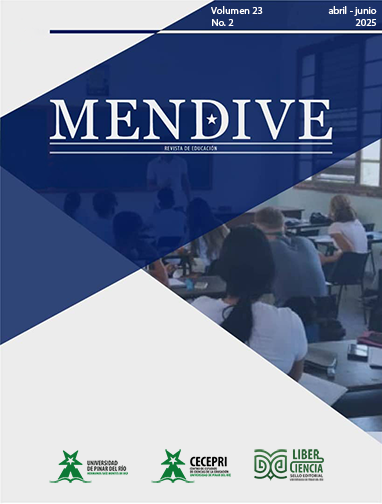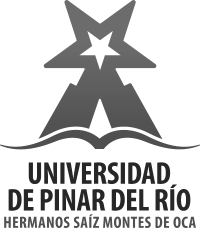Environmental education to conserve Huascarán National Park. A quasi-experimental study using experiential activities
Main Article Content
Abstract
Anthropogenic climate change, biodiversity loss, massive deforestation, and the greenhouse effect are some of the causes of terrestrial ecosystem degradation. In this regard, the study demonstrates that environmental education based on experiential activities significantly influences the conservation of Huascarán National Park. A quasi-experimental design was used, with students from preschool, primary, and secondary schools in the Paltay and Paria micro-watersheds (Áncash, Peru) as the study group. The survey technique was used, and four questionnaires were used as instruments to assess the dimensions of the HNP conservation variable. These questionnaires were subjected to validity by expert judgment and reliability testing. The results showed a P-value greater than 0.005 for the control group, indicating no significant changes in their grades. Meanwhile, the experimental group obtained a P-value of .000. This demonstrates significant changes in the grades obtained, demonstrating that students in the experimental group possess adequate environmental education. The overall conclusion is that experiential activities such as guided tours and solid waste collection and segregation have generated changes in behaviors and attitudes toward conservation of the Huascarán National Park.
Downloads
Article Details

This work is licensed under a Creative Commons Attribution-NonCommercial 4.0 International License.
References
Castillo Reyna J., Rivero Aranda R. E., & Ramírez Angulo, J. (2016). Aprendizaje vivencial y su conexión a un entorno social: de la práctica a la realidad. ANFEI Digital. 5. https://anfei.mx/revista/index.php/revista/article/view/294
Castillo-Figueroa, D., & Sáenz-Jiménez, F. (2019). Experiencias de educación ambiental para la conservación del Cóndor Andino (vultur gryphus) en la provincia del Guavio, Cundinamarca (Colombia). Revista Luna Azul, (49), 90-108. https://doi.org/10.17151/luaz.2019.49.5
Cavalcante B., Ferreira H. J., & Dias Da Silva, C. D. (2021). A importância das bromélias no meio ambiente: uma proposta de sequência didática para sensibilização ambiental de estudantes da educação básica. https://doi.org/10.1590/SciELOPreprints.2917
Díaz Grijalva, G., Camarena Gómez, B. O., Mirón Juárez, C. A., & Ochoa Ávila, E. (2019). Prácticas docentes en educación ambiental y habilidades proambientales en el estudiantado de quinto grado de primaria. Revista Actualidades Investigativas en Educación, 19(3), 1-18. https://doi.org/10.15517/aie.v19i3.38797
Esteban Ibáñez, M., Amador Muñoz, L. V., & Mateos Claros, F. (2017). Attitudes of University Students towards the Environment: Environmental Education and Innovation. Revista De Humanidades, (31), 17-38. https://doi.org/10.5944/rdh.31.2017.19071
Flórez-Yepes, G. Y., Rincón-Santamaría, A., Cardon, P. S., & Gallego, F. A. (2018). Learning tools in environmental education at fundación niños de los andes in Manizales, ColombiaRevista Electronica Educare, 22(2). https://doi.org/10.15359/ree.22-2.5
Fuentealba, C. M. (2018). Attitudinal pro-environmental assessment: A global analysis in primary, secondary and tertiary education students. Revista Luna Azul, 47, 159-176. https://doi.org/10.17151/luaz.2019.47.9
Hernández Carretero, A. M., Burgui, M., Velázquez de Castro, F., & Corrales Vázquez, J. M. (2018). ¿Responden los libros de texto a las demandas de la educación ambiental? Un análisis para la educación secundaria. Boletín de la Asociación de Geógrafos Españoles, 77, 80-110. https://dx.doi.org/10.21138/bage.2535
Meireles, C., Schiatti, L., Reis, R., Creed, J. C. & Pimentel D. S. (2021). Estudo de caso: desenvolvimento do programa de educação e interpretação ambiental e patrimonial da Reserva Biológica Estadual de Guaratiba (Rio de Janeiro/Brasil). https://doi.org/10.1590/SciELOPreprints.2752
Mendoza, C. D., & Sánchez, K. P. (2019). Significant environmental learning through the implementation of an environmental education model. case study: Educational institution in Machado, Bolívar-Colombia. Revista Luna Azul, (48), 156-171. https://doi.org/10.17151/LUAZ.2019.48.9
Prosser B. G., & Romero M. I. (2019). Investigación en educación ambiental con menores en Iberoamérica: una revisión bibliométrica de 1999 a 2019. Revista Mexicana de Investigacion Educativa. 24(83), 1027-1053. https://ojs.rmie.mx/index.php/rmie/article/view/331
Quintana-Arias, R. F. (2017). La educación ambiental y su importancia en la relación sustentable: Hombre-Naturaleza-Territorio. Revista Latinoamericana de Ciencias Sociales, Niñez y Juventud, 15(2), pp. 927-949. https://doi.org/10.11600/1692715x.1520929042016
Sabino, E., Lavado W., & Aybar C. (2019). Estimación de las zonas de vida de Holdridge en el Perú, Servicio Nacional De Meteorología E Hidrología Del Perú-Senamhi. Dirección de Hidrología-DHI. https://www.senamhi.gob.pe/load/file/01401SENA-87.pdf
Shoobridge, D. (2005). Perfil de área protegida-Perú. Parque Nacional Huascarán. https://www.parkswatch.org/parkprofiles/pdf/hunp_spa.pdf
Torres Cruz, D. L., Fonseca Villamil, W. P., & Pineda Jaimes, B. N. (2017). Las vivencias como estrategia de fortalecimiento del pensamiento crítico en educación rural. Praxis y Saber, 8(17), 201-224. https://doi.org/10.19053/22160159.v8.n17.2018.7207
Torres, B., Amérigo, M., & García, J. A. (2021). Evaluation of a proenvironmental intervention in primary school students (10-13 age) from Castilla-La Mancha (Spain). Revista Electronica Educare, 25(3). https://doi.org/10.15359/ree.25-3.11
Trujillo Meza, J. & Colorado de Hernández, M. (2016). El conocimiento, conceptos valorativos y la preservación del medio ambiente. Quipukamayoc, 24(46), 139-152. https://doi.org/10.15381/quipu.v24i46.13248


